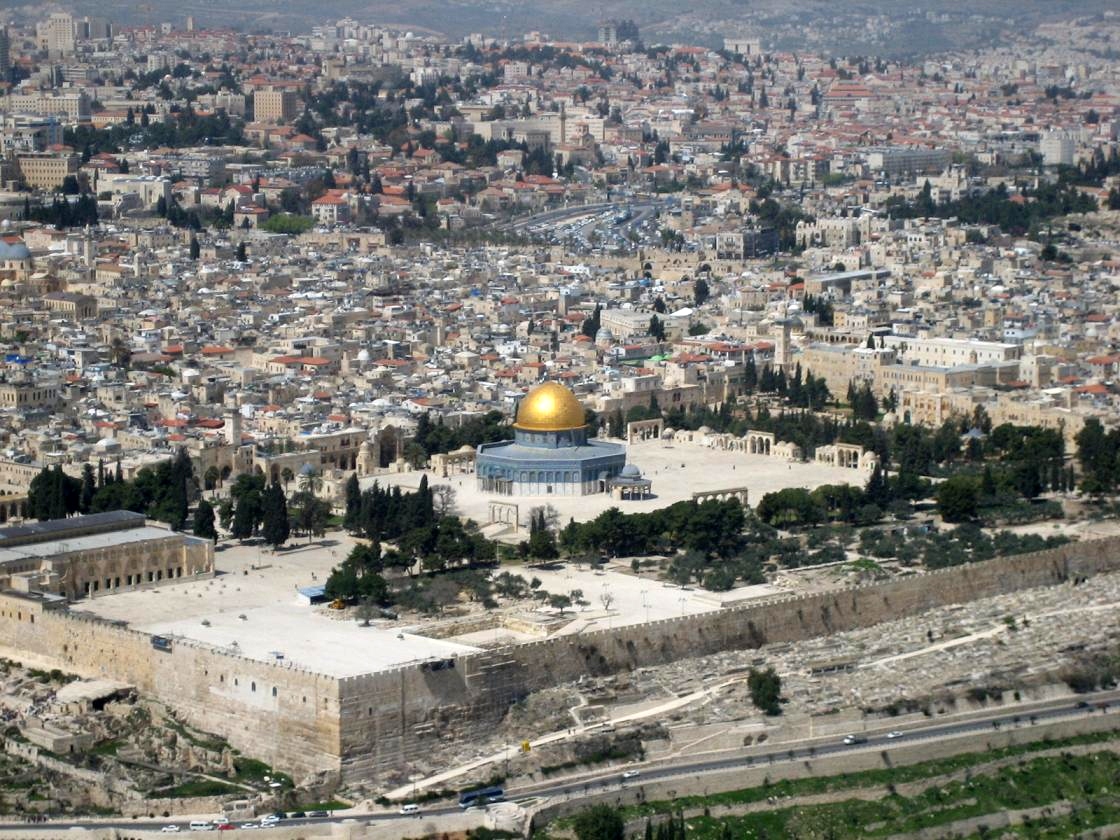On November 2, 2015, the world marked the 20th anniversary of the assassination of Israeli Prime Minister and Nobel Peace Prize recipient Yitzhak Rabin by a far-right Jewish extremist. That anniversary was overshadowed by a renewed round of tension and violence between Israel and Palestinians. For many of us, these hostilities seem intractable and interminable, and peace between the two people impossible. This month, Bar Ilan University professor Jay Rothman argues that the failure to achieve peace between Israelis and Palestinians stems from a fundamental misunderstanding of the conflict itself. At its root, Rothman believes, the conflict is about identity and competing historical narratives (not simply diplomacy and high-level politics). Recognizing the roots of the dispute offers the best way to achieve an end to the violence.
Read these insightful Origins articles for more on the Middle East: The Palestinian-Israeli Conflict; The Religious Divide in Iraq; ISIS; U.S.-Iraq Relations; The U.S. War in Iraq; Islamic Politics in Egypt; The Sunni-Shi'i Divide; the Alawites and Syria; U.S.-Iranian Relations; and Turkey’s Politics.
Listen to these History Talk podcasts on Understanding the Middle East and the Syrian Civil War and Arab Spring.
When Israeli Prime Minister Benjamin Netanyahu came to Washington in November 2015, he arrived amidst a low-water mark in U.S.-Israeli relations. He also left a country that was experiencing a new round of Israeli-Palestinian violence. And a peaceful resolution to this decades-long conflict seems farther away than ever.
 |
We usually think about the Middle East “peace process” as a top-down, high-level, diplomatically formal business. We also wonder if it will ever end and whether it is doomed to failure.
Political administrations have changed and negotiators have come and gone but the conflict between Israelis and Palestinians seems as intractable as ever. After all, the negotiations so far have proceeded from the “land for peace” formula laid out in United Nations Security Council Resolution 242 of 1967, almost 50 years ago.
Perhaps there is a more comprehensive way to look at the conflict.
As a problem of diplomacy and security to be solved in that “top-down” way, we have seen the impasse as a question of political give and take. It has been an ongoing fight over “who gets what, when, and how,” to borrow Harold Lasswell’s definition of politics.
But before we can get to a resolution over who gets what, we must first recognize that the Israeli-Palestinian conflict is a prime and tragic example of the way two nations competing over the same territory struggle not only over conflicting political and economic interests but also with competing mythologies, cultures, and historical narratives.
All historical narratives—the stories we tell ourselves about the past—are constructed through acts of interpretation. The same set of historical facts can yield different meanings for different people and that is surely the case for Israelis and Palestinians as they look at their histories.
The fierce debates over which interpretation is “right,” however, may miss the point because each version of this history is so central to the collective identity of each group and neither side is ever going to persuade the other that their interpretation is “wrong.”
Instead, each side needs to recognize how and why these historical narratives have become “true” for them. Reconciling the “competing mythologies” is essential if the next Arab-Israeli peace process, with the Palestinian question at its core, has any chance to succeed.
Rather than arguing over “facts”—the usual approach of pitting the “fact” of one side against the “fact” of the other—such an approach would demand that each side come to understand the deeper meaning of those “facts” to the people who believe them.
Before the details of peace can be worked out, each side needs to acknowledge more fully how the identity of the other side has developed over generations and been shaped by the conflict itself.
In the Israeli-Palestinian conflict—like so many other protracted and existential conflicts where so many demands are stated in mutually exclusive terms—only when the other side’s fundamental needs are met can its own be fulfilled.
Traditional diplomacy and endless fights over who gets what, how, and when have not solved this problem. The suffering continues.
It is time for a different approach.
A Brief Chronology of the Israeli-Palestinian Conflict
Even a chronology of the political events that have created the current situation can be the source of sharp disagreement. Historical “facts” are often not as transparent or objective as we would like them to be.
Recognizing that any review of these events necessarily emphasizes some moments at the expense of others—and will likely raise objections from readers for the events I choose to focus on—a brief overview of how we got to where we are now is important to set the stage as we think of new pathways to peace.
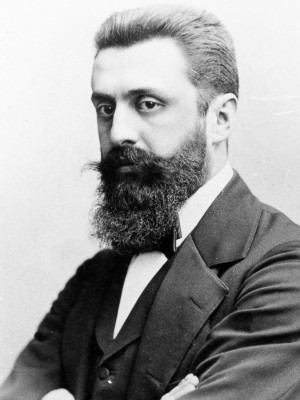 |
The Zionist movement was founded at the end of the 19th century by Viennese journalist Theodor Herzl. Convinced that Europe would never rid itself of anti-Semitism, he called for the “restoration of the Jewish state” in his 1896 book The Jewish State.
Although Jews had been immigrating steadily albeit in small numbers to Palestine for a couple decades before this time—mostly to flee increasingly oppressive conditions imposed upon the large populations of Jews in eastern Europe—large-scale, systematic programs for Jewish immigration to Palestine began in earnest following the first Zionist Congress in 1897.
Relations between these new Jewish immigrants and the Arab populations in and around Palestine were generally strained and sometimes violent.
In the midst of World War I, the French and the British issued the Sykes-Picot document drawing new colonial boundaries in the Middle East. In 1917, Britain issued the Balfour Declaration, promising to help establish a “national home [in Palestine] for the Jewish people.” Arabs saw both these diplomatic developments as treachery, generating hostility toward Jewish settlers.
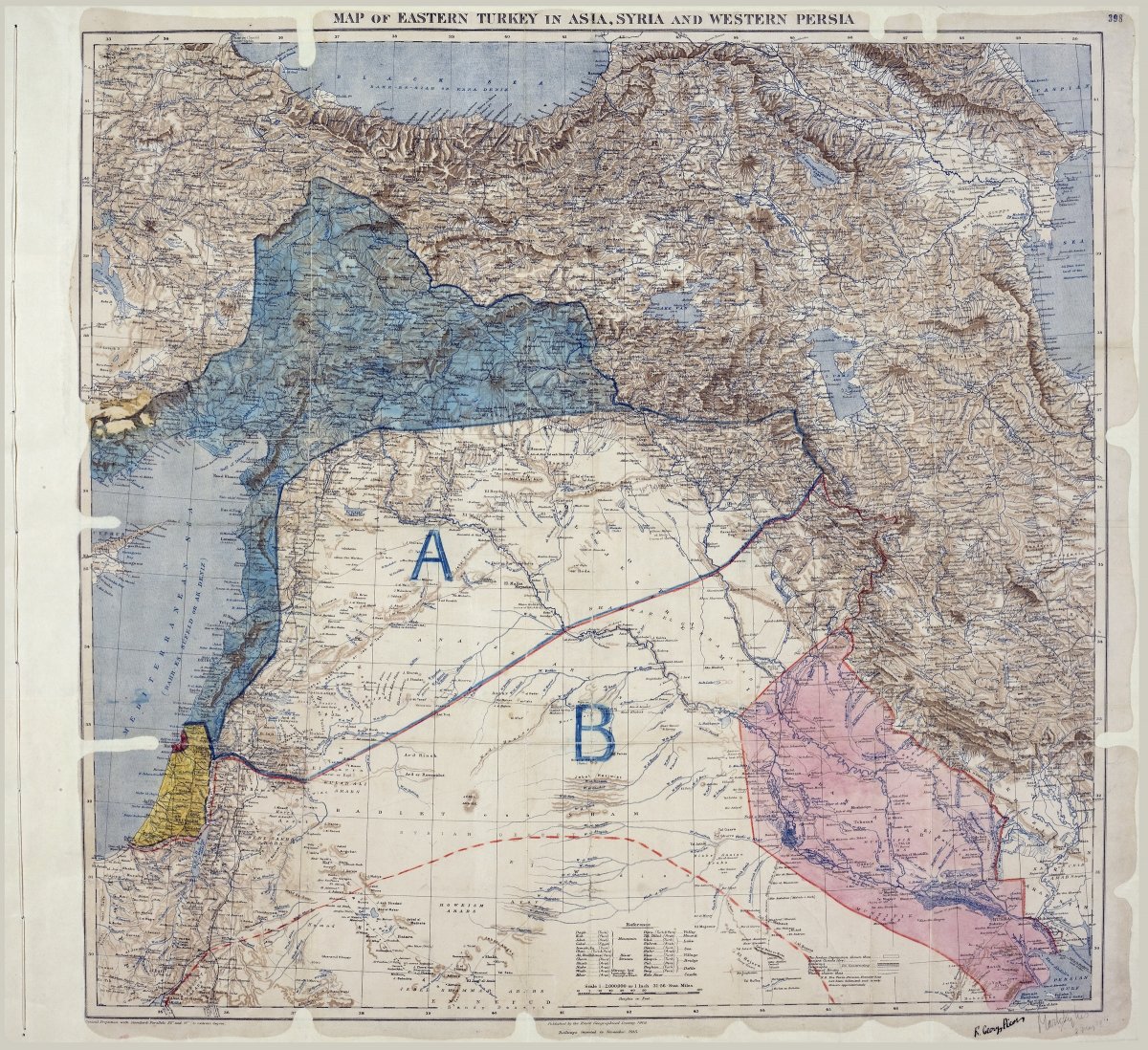 |
Jewish arrivals in Palestine continued and peaked in 1935 at 60,000. The following year, feeling increasingly threatened by this influx, the Arabs in Palestine revolted against the British, who maintained rule over the area. This insurgency represented the most organized and vehement rejection of Zionism and British policies supporting it by Palestinian Arabs to date.
In the aftermath of the Holocaust, international sympathy for the Zionist endeavor grew, and the State of Israel was established in a United Nations declaration in 1947 which envisioned a Jewish state and a Palestinian state.
The declaration was unanimously rejected by Arabs in and around Palestine, and war was immediately launched against the new Jewish state by all of its Arab neighbors. Israel emerged the military victor, gaining more territory than originally mandated by the United Nations. Some 700,000 to 800,000 Palestinians fled or were exiled. Thus began the Palestinian diaspora.
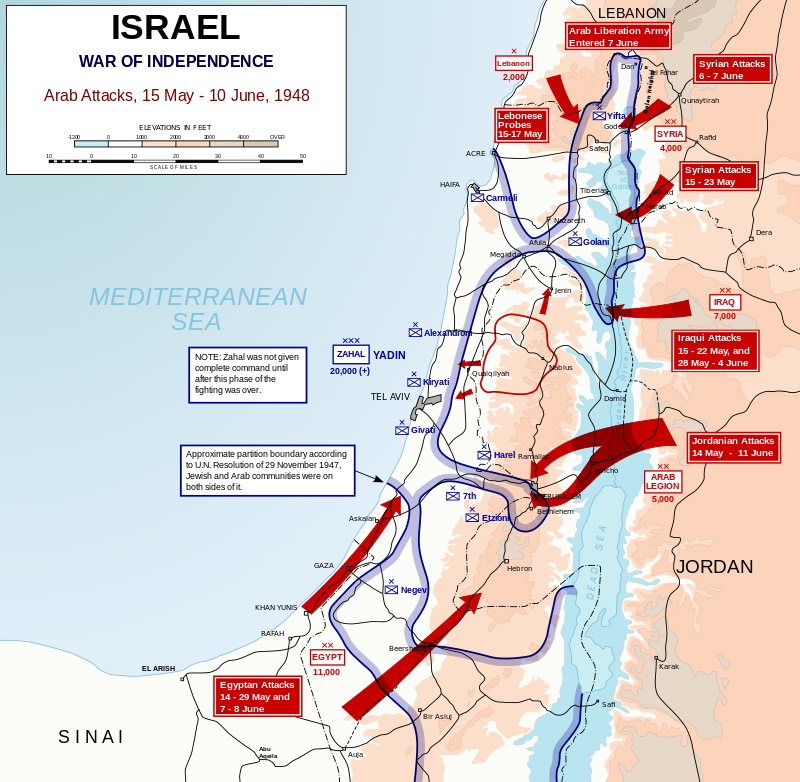 |
With a Jewish state now an accomplished geopolitical fact, Palestinians began to threaten Israel in a variety of ways.
The Palestinian Liberation Organization (PLO) was founded in 1964 with the destruction of Israel among its basic principles. The PLO became even more militant after Israel’s military victory in 1967’s “Six Day War” when Israel captured the Sinai Peninsula and Gaza Strip from Egypt, the Golan Heights from Syria, and the West Bank and East Jerusalem from Jordan.
Across the 1970s, the PLO grew and was increasingly recognized internationally, despite the U.S. position not to engage with the organization.
At the end of the decade, President Jimmy Carter helped broker the Camp David Accords between Egypt and Israel. But this agreement did not include Palestinians, and the treaty was rejected by Arabs, especially Palestinians, as a “sellout.” Indeed, Egyptian President Anwar Sadat (PDF File) was soon assassinated for it.
 |
The Israeli-Palestinian conflict escalated in 1982 when Israel invaded Lebanon to destroy the powerful military and political infrastructure the PLO had built in that shattered country. The PLO was defeated and “exiled” from Lebanon, but Israel was internally torn asunder as a majority of Israelis came to view this war as unnecessary—its first “non-defensive” war.
In late 1987, after a series of violent incidents between Israelis and Palestinians, the Palestinian communities in the West Bank and Gaza Strip began a spontaneous uprising (which came to be known as the Intifada, from the Arabic for “shaking off”) against Israeli rule, which had been in place for 20 years.
For the first time, Palestinians in the West Bank and the Gaza Strip, and not the PLO leaders in the diaspora, began to set the agenda for the Palestinian national movement.
In early 1991, the Gulf War pushed Israel and the Palestinians even further apart. In response to the Iraqi invasion and occupation of Kuwait, the United States led a coalition, which included several Arab states, against Iraq. The PLO was one of the few supporters of the Iraqi regime. Israelis were hit by missile attacks from Iraq.
Due in large part to its victory over Iraq and with the simultaneous decline of Soviet influence, the United States gained new credibility and influence in the Middle East.
In October 1991, U.S. Secretary of State James Baker succeeded in organizing a Middle East peace conference in which representatives of Israel, Syria, Jordan, Lebanon, and the Palestinians sat down at the same table for the first time in history. In spite of an acrimonious beginning, bilateral negotiations between all the parties began by January 1992.
These discussions led eventually to the famous White House handshake between Israeli Prime Minister Yitzhak Rabin and Palestinian leader Yasser Arafat, affirming the Oslo accords.
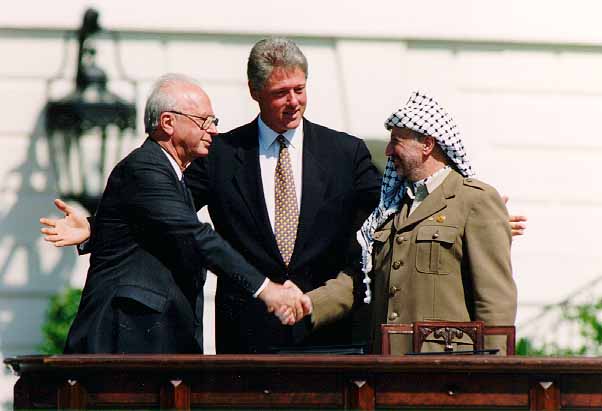 |
Despite its initial promise, the Oslo peace process soon bogged down. Rabin was assassinated by an Israeli extremist in 1995 and what appeared to be a path to peace soon spiraled into the Second Palestinian Intifada by 2000.
The collapse of negotiations after Oslo was followed by the rebuilding of psychological walls and the construction of actual walls dividing the Israelis and Palestinians to this day. Several more rounds of diplomatic processes were launched by successive U.S. presidents and their secretaries of state, with the latest failure in May 2014.
The Myths of National Origin
Overviews of historical and political events only help us so far, however. Distinct from the chronology, we need to understand the underlying emotional, cultural, and psychological meanings that the parties involved have invested in these events.
The competing mythologies and historical narratives of the Israeli-Palestinian conflict are exclusive and oppositional, saturated with the sense that the other side lacks historical or political legitimacy.
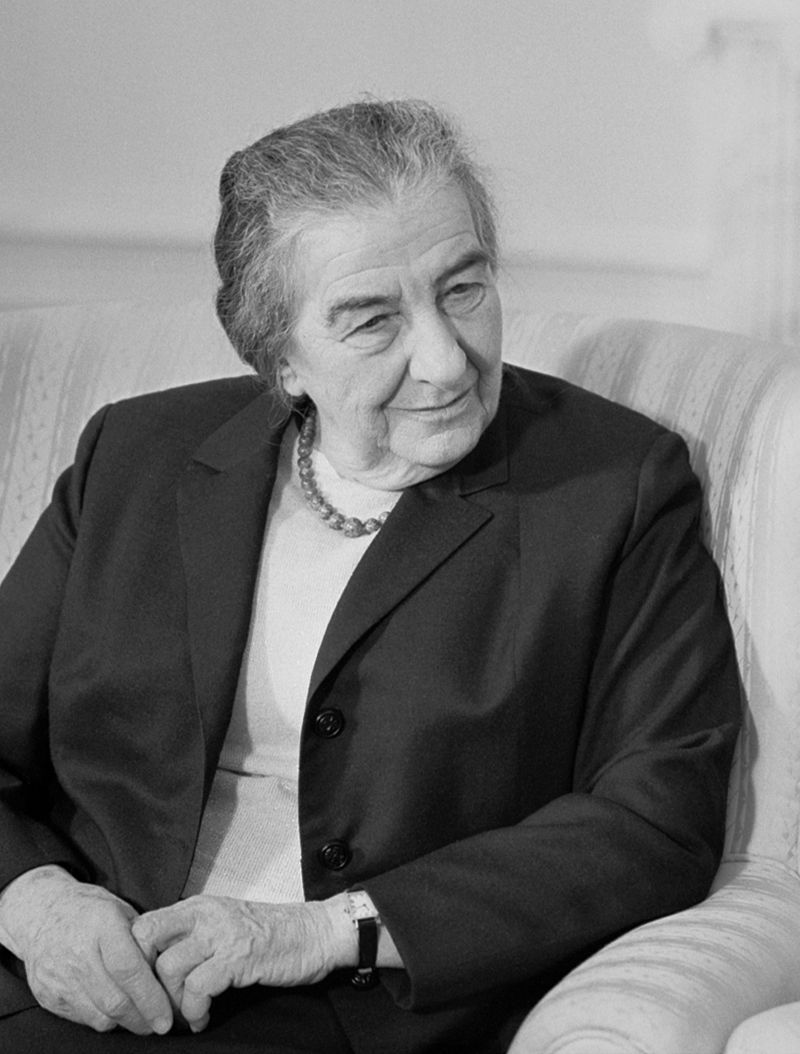 |
Indeed, in 1969, Israeli Prime Minister Golda Meir was widely quoted as saying that was no such entity as a Palestinian People, and Arabs said that the “Zionist entity” was an alien presence in the Arab midst that must be swept into the sea.
Israelis and Palestinians are not alone. Such mutually exclusive hostilities have appeared in Cyprus, South Africa, and Sri Lanka in recent years. One analyst estimated 71 such conflicts between 1955-2004 fought over the quest for and denial of national identity and self-determination.
The term myth is charged and I mean it here not as a synonym for fiction, but as narratives shared by a group of people which define their identity.
As the historian of nationalist movements Anthony Smith explains, these “myths of origins and descent” have six parts: 1) origins in time and space, 2) ancestry and descent, 3) migrations and liberations, 4) golden ages, 5) current sad decline and 6) future rebirth.
Problems arise when two such myths conflict in the same physical space, creating protracted disputes not just over political details, land, and resources, but over the more existential questions of identity.
This is exactly what has happened with Israelis and Palestinians, whose competing narratives can be outlined as follows.
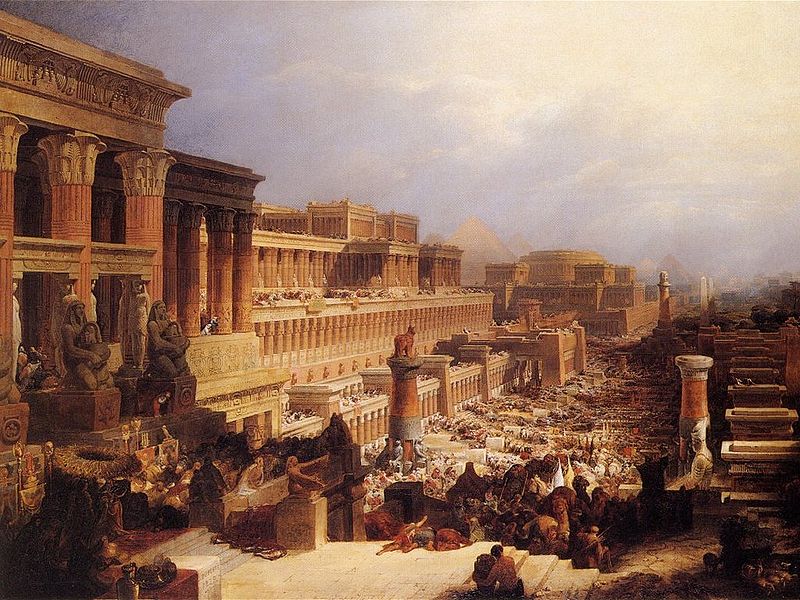 |
(1) Origins in time and space. According to the Biblical account, the Jews emerged as a people at the time of their exodus from Egypt, approximately 4,000 years ago and settled in the land God promised them.
The Palestinians trace their roots to stories of a peasant society living well and simply off the fruit of the land. They honor their connection to the land where their religions, either Christianity or Islam, flourished. As a people, they emerged in many ways in sumud (Arabic for “steadfastness”) against Turkish and British colonialism and now Zionist colonialism (for important distinction See Waxman, 2019: 42-44). They work unceasingly for a future that will supplant their loathsome present and in which they will regain their dignity and build a state, like all others, in their homeland.
 |
(2) Ancestry and descent. In addition to their belief, as either Christians or Muslims, that they are adherents of a religious true path, Palestinians also link themselves to the Arab purveyors of modern science and literature who thrived in the Middle Ages.
Religious Jews consider themselves to be the Chosen People, the children of Abraham, to whom God spoke, and of Moses, through whom God gave the Torah as a heritage for the People of Israel. Some secular Jews see themselves as descendants of great prophets who wrote profound poetry and provided instructions for a world of justice and righteousness.
(3) Migrations and liberations. After establishing the First Temple in Jerusalem and building a Hebrew civilization, the Jews were exiled by the Babylonians. Later, they returned to the Land of Israel and built the Second Temple and again flourished as a religious civilization. They were again exiled, this time by the Romans in 70 CE, and wandered for almost 2,000 years, living as strangers and outsiders in other lands, until they returned to reclaim what they continued to view as their land and rebuild modern Zion in 1948.
The Palestinians take pride in recalling that their forebears have been in Palestine in an unbroken continuity. Although millions are now in exile, this merely adds strength to their determination to return. Liberation, it is dreamed, will be a return to the control the Palestinians feel they once had over their lives and daily affairs.
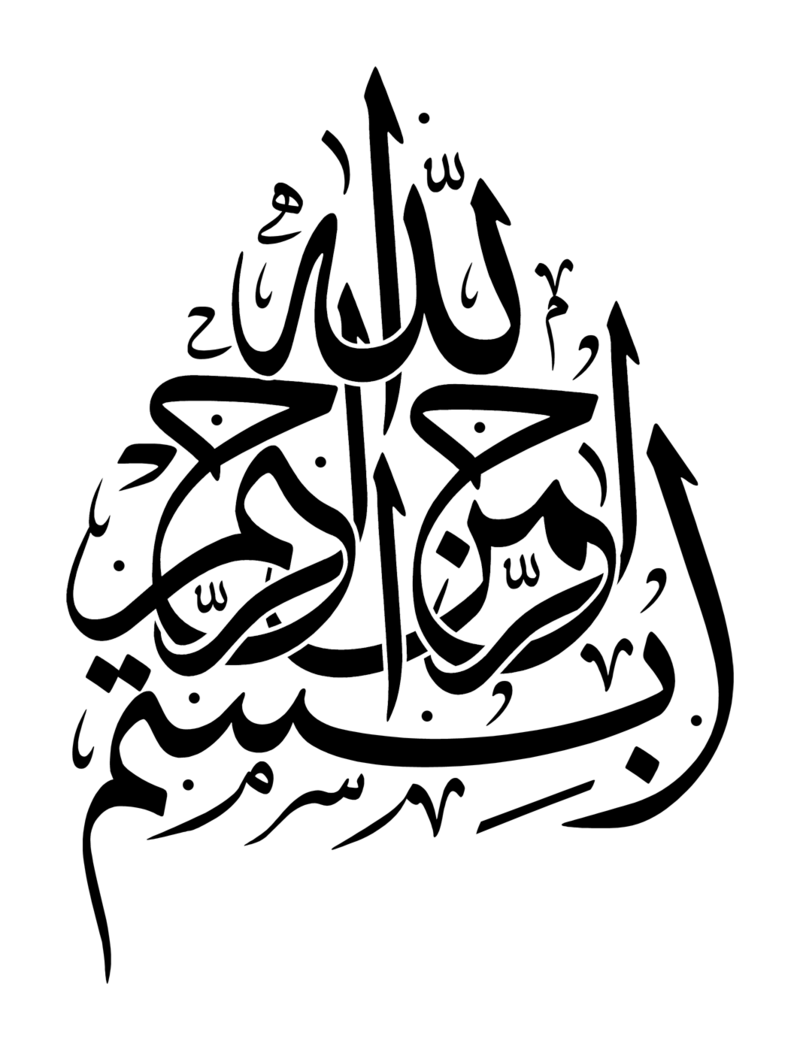 |
(4) Golden ages. The Palestinians, through their connection with the Muslim, Christian, and Arab communities globally, glory in the greatness of Arab genius. Particularly in the Middle Ages, Islamic thought, philosophy, literature, and poetry were gifts transmitted to civilization. The Arab civilization was once an expansive and glorified one. Its leaders were feared and its greatness respected.
The Jews recall their golden age in the periods of the First and Second Temples.
Both peoples view their golden pasts as providing moral markers for the proud and dignified existence they seek in their own modern states—to be preserved and promoted by the Israelis or sought for and built by the Palestinians.
(5) Their current sad decline. The Jews speak of being in a situation of exile even to this day because, despite the homeland/state, most Jews still live in the diaspora. Moreover, Israel has continued to struggle for acceptance and existence since its uneasy founding.
The Palestinians reject their current oppression and dispersion as unnatural and unacceptable. They are harassed by the Israelis, manipulated by their “fellow” Arabs in cynical and destructive ways, and internally fragmented.
(6) Future rebirth. The Palestinians maintain faith that justice demands that they have their own land and the self-determination and renewal that come with it.
The Jews in Israel had three dreams with the founding of their state: that it would serve as an ingathering of all Jewish exiles from the four corners of the globe, provide a place of peace and refuge for a tired people, and provide the Jewish people with social and cultural regeneration. For many Jews, these cherished goals have only been achieved to a limited degree.
Conflicting Mythologies
For many Jews, the founding of Israel in 1948 was heralded as the fulfillment of Zionist aspirations for national independence. Palestinians cursed 1948 as “the disaster.”
Perhaps given the contending national myths of each community, such diametrically opposite attitudes toward the founding of Israel were inevitable.
We can group those conflicting attitudes under three headings: the memory and perpetuation of trauma that each finds in their relationships with the other; the related demonization of the collective other; and the way in which each side engages in exclusive self-definition by virtue of differentiation and rejection of the other side.
Memories and the Perpetuation of Trauma
Despite colonization and oppression by others—Turks, British, and French—Palestinians regard the Israelis as their primary victimizers.
 |
The 1948 massacre at the Palestinian village of Deir Yassin, or the 1982 killings in the Lebanese refugee camps of Sabra and Shatilla, or the ongoing suppression of Palestinian resistance to Israeli rule in the West Bank and Gaza Strip confirm for Palestinians that Zionists are usurpers who, with the aid of Western (and particularly U.S.) funding and designs, have taken Palestine by force, displaced the indigenous people, and conducted step-by-step expansion to this day.
The memory of the Holocaust, in which six million European Jews were murdered, continues to resonate for most Israeli Jews and each act of violence against Israelis plays on that memory. Arab rejectionism and Palestinian militancy against Israel over the years are viewed by Israelis (many of whom do not, for the most part, distinguish between anti-Semitism and anti-Zionism) as new attempts at Jewish genocide.
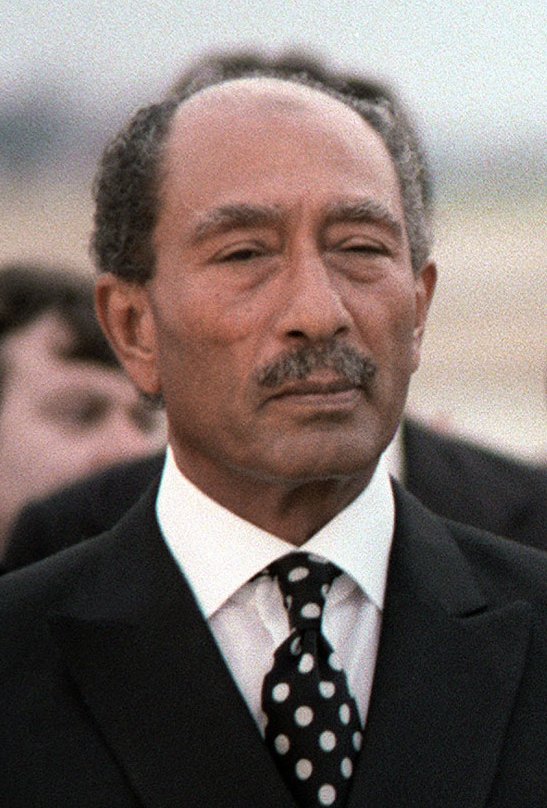 |
Demonization of the Other
When Egyptian President Anwar Sadat visited Jerusalem in 1977, he said that some walls separating Israelis and Arabs had begun to fall, with many Arabs accepting that Israel was there to stay and Israel, particularly following the 1973 war, acknowledging that military might alone would not ensure its survival. “Yet, there remains another wall,” said Sadat in a speech in the Israeli Knesset:
This wall constitutes a psychological barrier between us, a barrier of suspicion, a barrier of rejection; a barrier of fear, of deception, a barrier of hallucination without any action, deed or decision. A barrier of distorted and eroded interpretation of every event and statement. It is this psychological barrier that I have described in official statements as constituting 70 percent of the whole problem.
Although these comments were made about the Israeli-Arab conflict in general, they are equally applicable to the Israeli-Palestinian context as well. In other words, each community not only sees its own devil in the other side but, in such a vision, a certain reality has been created along those lines.
Each side seems to rely on this enemy image as part of its own self-definition. Having an enemy allows each community to project onto the other those parts of themselves that they would rather not “own”— aggression, selfishness, and ill temper.
Projection bolsters a people’s collective self-esteem while fixing the rejection of the other group. Finding a way out of the conflict, therefore, is not simply a matter of negotiating but of redefining oneself in relationship to that other.
Exclusive Self-Definition
As they built their own nation, Israelis disregarded or resisted the emerging aspirations of Arabs.
Simultaneously, in expressing their own emerging nationalism, Arabs articulated themselves in opposition to the West and the early Zionists that came from there (after the establishment of Israel, its mostly western population doubled in size with Jews flowing in from the Arab world where they were largely rejected as complicit with Zionism).
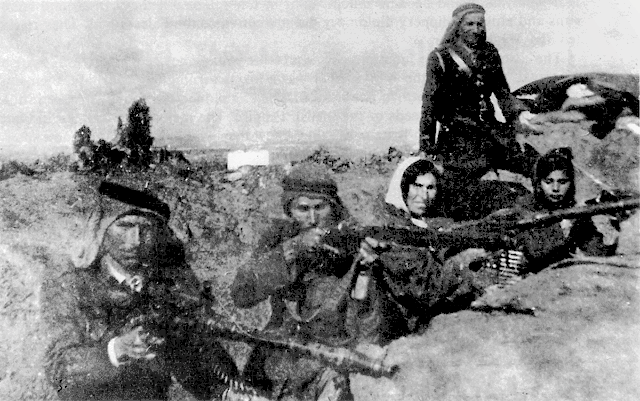 |
In order for Israelis to see their national project as legitimate, they rejected legitimacy of those same aspirations on the part of Palestinians. Since the start of the Zionist effort, and more intensively since 1948, Palestinians have felt the same way about Israel.
As the 20th century wore on, Zionists came to believe that their survival and safety would be guaranteed best, or perhaps only, to the extent that the Palestinian national movement was not viewed as legitimate by the world, and the Palestinians were not accepted as partners for peace in the region.
The Palestinian and Israeli claims, many Zionists came to believe, were mutually exclusive and zero-sum, and thus armed and existential battle was necessary: “We fight, therefore we are!” exclaimed Menachem Begin in 1972.
Likewise, most of the early Palestinian nationalists opposed Jewish nationalism, viewing it as imported Western imperialism. Indeed, it was partly this opposition—that is, self in contrast and opposition to others—that helped define and advance Palestinian nationalism.
Later, Palestinian nationalism became articulated and enlivened in its expression of self through armed opposition to Israel via the Palestinian Liberation Organization (PLO). In this sense, Palestinians and the Arab groups who have supported them aren’t merely fighting Israelis or Israeli policies, but Israel itself.
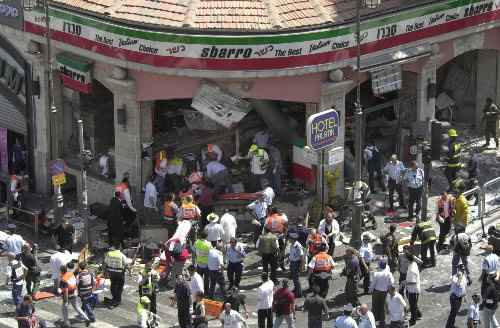 |
A New Way Out: The Meshing of Stories
While each side in the Israeli-Palestinian conflict will root it in decades, centuries, or even millennia of history, it is mostly a creation of the nationalism that swept the globe in the 20th century. It stands alongside other tragic examples of national/communal conflicts so prevalent over the past hundred years.
I have suggested here that the stalemate has stemmed in part from failure to see the conflict as one of clashing narratives and competing mythologies in addition to one of territories, boundaries, and security arrangements.
In deep conflicts like this one, the parties’ stories clash with alarming noise. And that noise reverberates to higher and higher levels as the vicious cycle of violence unfolds.
The trained eye and the open heart, however, can witness another dynamic running between the stories of parties who have suffered and inflicted such pain.
It is a meshing, a merging of underlying hopes, fears, and motivations that may provide some hope for a new way out, a new path to peace. This meshing of stories might lay the foundation for constructive cooperation to emerge out of years of deep conflict.
A more empathetic perspective would enable each side to better appreciate the perspectives, experiences, and needs of the other. It might also help clarify how much each side shares in common.
There is probably no issue that expresses the zero-sum nature of the conflict more than the competing claims over the land itself. For so many years, both Jews and Palestinians have expressed their love of the land of Palestine/Israel as integral to the dreams, memories, and myths of their people.
In a pastoral description written by an Arab in the 10th century, Palestine (Filastin) is seen as a treasure. For the Jews, the land of Israel has meant escape from bitter persecution and the renewal of a tired people. There is common ground here.
Each party is deeply committed to the same land, which symbolically and practically represents control of its own destiny, dignity, and expression of its own distinctive identity, refuge from a tragic past, and predictability in a safe future. Thus, since neither can annihilate the other—as they seem to begin to understand—then each side may gain a new sense of analytic empathy.
The concept of analytic empathy, to be distinguished from emotional empathy, is used to summarize constructive insight that may be gained by parties about their adversaries’ motivations in a conflict. It is insight that just as one’s own side must have its needs fulfilled and will not cease pursuing those needs despite external resistance, so the other side too will not rest until it achieves such needs.
Thus a hardheaded realism about the necessity of cooperation for the fulfillment of each side’s respective needs, not at the expense of the other, but rather achieved in part through gains for them as well, for the sake of self, may evolve.
Based on such realism, parties may begin to seek solutions developed to address the concrete interests and underlying needs of each side—cooperatively.
Barzilai, Gad. Wars, Internal Conflicts, and Political Order: A Jewish Democracy in the Middle East (State University of New York Press, 1996).
Catignani, Sergio. Israeli Counter-Insurgency and the two Intifadas: Dilemmas of a Conventional Army (Routledge, 2008).
Falk, Avner, Fratricide in the Holy Land: A Psychoanalytic View of the Arab-Israeli Conflict (University of Wisconsin Press, 2004).
Fraser, T. G. The Arab–Israeli Conflict, 2nd ed. (Palgrave Macmillan, 2004).
Gelvin, James L. The Israel-Palestine Conflict: One Hundred Years of War (Cambridge University Press, 2005).
Khouri, Fred J. The Arab–Israeli Dilemma, 3rd ed. (Syracuse University Press, 1985).
Morris, Benny. 1948: The History of the First Arab-Israeli War (Yale University Press, 2008).
Pappe, Ilan. A History of Modern Palestine: One Nation, Two Peoples, 2nd ed. (Cambridge University Press, 2006).
Quandt, William B. Peace Process, 3rd ed. (Brookings Institution Press, 2005).
Said, Edward W. The Question of Palestine (Vintage Books, 1992).
Tessler, Mark. A History of the Israeli–Palestinian Conflict (Indiana University Press, 1994).
Tilley, Virginia. The One-State Solution (University of Michigan Press, 2005).
Wasserstein, Bernard. Israelis and Palestinians (Yale University Press, 2003).
Waxman, D. The Israeli-Palestinian Conflict: What everyone needs to know (Oxford University Press, 2019).

